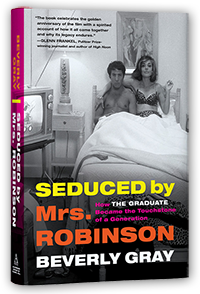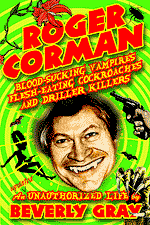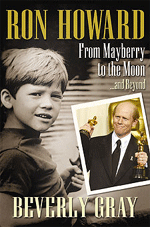Monday, July 25, 2011
The Fantastic Four: Revenge of the Invisible Film
With the triumphant arrival of Captain America, another comic-book superhero has made his mark at the movies. Frankly, I’ve not enough of a comic-book geek to fully appreciate films like this one. When I was Roger Corman’s story editor at Concorde-New Horizons, his wife Julie often spoke of filming Spiderman, for which the Cormans briefly held the rights. Julie had me read treatments for a Spiderman movie, but I had a hard time imagining how we’d come up with special effects that were anything but laughable. Spiderman, I learned, slings webs and shimmies up the sides of buildings. On a budget of $1 million (or less, much less), it would be hard to avoid looking cheesy.
But in late 1992, I found myself working on The Fantastic Four. The Only-in-Hollywood story has often been told: how Bernd Eichinger, of the Munich-based Neue Constantin, owned the movie rights to this Marvel Comics series about four colleagues who gain eccentric superpowers (like invisibility and the tendency to burst into flame) after being struck by cosmic rays during a space mission. Eichinger envisioned a lavish Hollywood epic, costing $40 million or so, but time was running out. Unless he started shooting by the end of 1992, the rights were no longer his. Enter Roger Corman, who was kicking himself for having missed the chance to buy the Teenage Mutant Ninja Turtles franchise. A deal was made for a fast and cheap co-production. Stan Lee came aboard as creative consultant, making sure we stuck to every detail of the original storyline, and my Concorde colleagues set to work on characters they had loved since childhood.
Holiday plans were scrapped, and the film went before the cameras on December 28, 1992. For director Oley Sassone and his no-name cast, this was a labor of love. They did their best, in a pre-CGI era, to replicate such superpowers as team leader Reed Richards’ impossibly stretchy limbs. And they reached into their own pockets to help bankroll a publicity effort that took them to comic book stores and fanboy conventions around the country. There was a big unveiling of the film’s trailer at L.A.’s Shrine Auditorium on July 11, 1993. Plans were also made for two celebrity galas when the film debuted in early 1994, raising money on behalf of critically ill children.
Then in December 1993, exactly one year after filming began, came word that Eichinger had just paid big bucks for Roger’s share of The Fantastic Four. He promptly shelved the finished movie, which allowed him to proceed with a major studio version that ultimately appeared in 2005. One of many disheartened by this turn of events was the director of the Children’s Miracle Network, which had just lost out on its gala charity premiere. Her wry comment: “If they were going to throw $2 million at a movie that will never be seen, I wish they would have thrown it our way.” Actors and crew members were equally crushed. There’s a bit of sweet revenge in the fact that the officially non-existent movie survives everywhere in bootleg copies, treasured by fans for its sincere, if threadbare, loyalty to its source material.
Hollywood insiders debate whether Roger Corman knew while the film was being made that it would never be released. He claims he’s not that conniving. But, being Roger, he focuses on the bottom line: “I was disappointed that we didn’t get a chance to release it, but I was also happy to make a whole lot of money off it.”
(Here's an essential link for Fantastic Four enthusiasts, sent my way by the screenplay's author, Craig Nevius. Thanks, Craig!)
Subscribe to:
Post Comments (Atom)









I remember this debacle from the time the film was finished. Am I remembering right that many of the participants essentially did this for free? I saw the film and enjoyed it for what it was and thought Doom and The Thing looked great. Wasn't Chris Columbus attached to the big budget version that was bandied about around this time? The bit regarding the charity is disheartening and the first I'd heard about that. Another great piece, Beverly!
ReplyDeleteYes, Chris Columbus' name was bandied about as the director of a big-budget Fantastic Four from the very start. He was hot because of Home Alone. As to participants doing Concorde's version for free, I'm sure the cast got the usual SAG wages, and the crew got the usual lousy Corman paycheck. But I can ask.
ReplyDeleteAn update, thanks to the very helpful Craig Nevius: "Everybody got paid (SAG etc). Everyone just worked really hard and put a lot into it because they were excited about it." So now you know!
ReplyDeleteThanks, Beverly. All I could remember was something about some of those involved were bitter over the way the film was treated and that many had either been paid very little or not at all, but did the job because they had passion for the project. This was in a magazine article from the mid 90s I have (somewhere) when the big budget FF film was being bandied about. Thanks for the clarification but now I will likely be obsessed with finding that magazine now, lol!
ReplyDeleteI am not a film pirate - but for the chance to see this otherwise unseeable film - I do own a bootleg VHS of this Fantastic Four. I liked it - it did have heart - and the Thing in that film was ALMOST as good as the Chiklis edition, in my opinion.
ReplyDeleteOnce again, the breadth of your friendships boggles me, Ms. Gray - Craig Nevius! We share a first name - and I'm wondering if we share some acquaintances - would he by any chance have been friends with or known a film professor from Southern Illinois University at Carbondale named Richard Blumenberg?
I don't know, but I'll ask him. Thanks to email, I think I can get to him pretty quickly.
DeleteI regret telling you this, Craig, but Craig Nevius has never heard of Richard Blumenberg. Sorry.
Delete